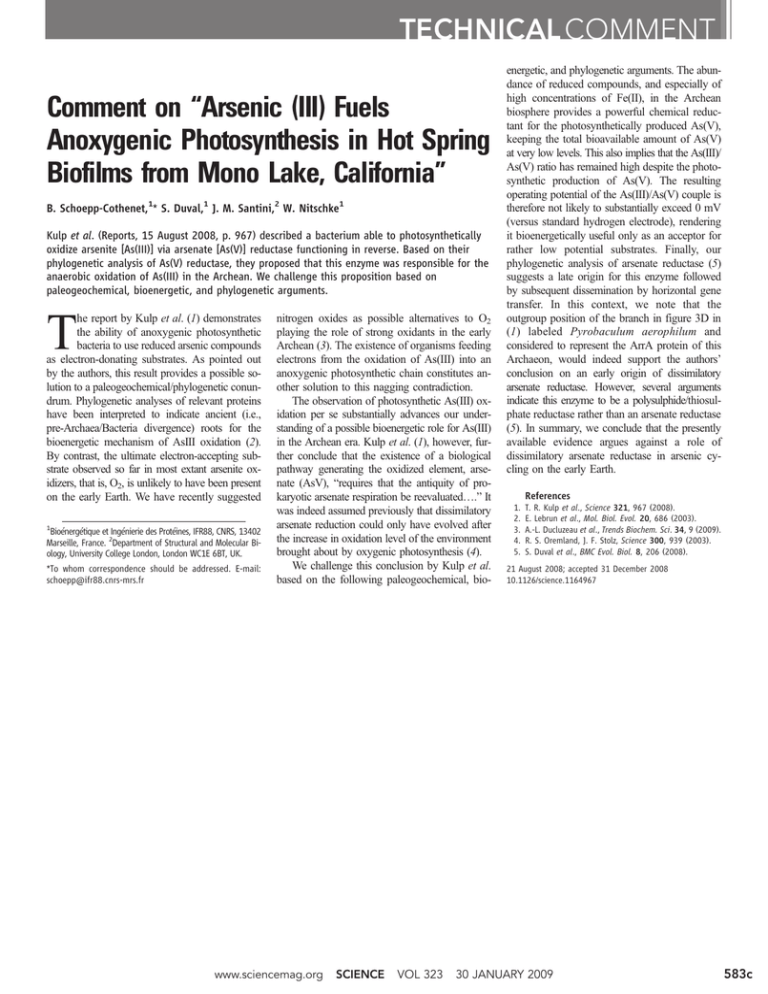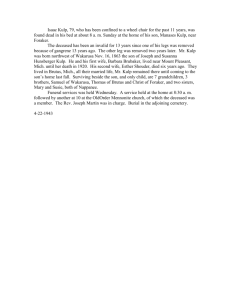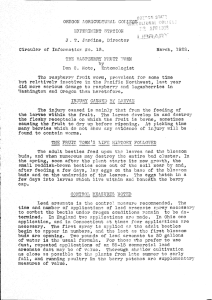Comment on “Arsenic (III) Fuels
advertisement

TECHNICAL COMMENT Comment on “Arsenic (III) Fuels Anoxygenic Photosynthesis in Hot Spring Biofilms from Mono Lake, California” B. Schoepp-Cothenet,1* S. Duval,1 J. M. Santini,2 W. Nitschke1 Kulp et al. (Reports, 15 August 2008, p. 967) described a bacterium able to photosynthetically oxidize arsenite [As(III)] via arsenate [As(V)] reductase functioning in reverse. Based on their phylogenetic analysis of As(V) reductase, they proposed that this enzyme was responsible for the anaerobic oxidation of As(III) in the Archean. We challenge this proposition based on paleogeochemical, bioenergetic, and phylogenetic arguments. he report by Kulp et al. (1) demonstrates the ability of anoxygenic photosynthetic bacteria to use reduced arsenic compounds as electron-donating substrates. As pointed out by the authors, this result provides a possible solution to a paleogeochemical/phylogenetic conundrum. Phylogenetic analyses of relevant proteins have been interpreted to indicate ancient (i.e., pre-Archaea/Bacteria divergence) roots for the bioenergetic mechanism of AsIII oxidation (2). By contrast, the ultimate electron-accepting substrate observed so far in most extant arsenite oxidizers, that is, O2, is unlikely to have been present on the early Earth. We have recently suggested T 1 Bioénergétique et Ingénierie des Protéines, IFR88, CNRS, 13402 Marseille, France. 2Department of Structural and Molecular Biology, University College London, London WC1E 6BT, UK. *To whom correspondence should be addressed. E-mail: schoepp@ifr88.cnrs-mrs.fr nitrogen oxides as possible alternatives to O2 playing the role of strong oxidants in the early Archean (3). The existence of organisms feeding electrons from the oxidation of As(III) into an anoxygenic photosynthetic chain constitutes another solution to this nagging contradiction. The observation of photosynthetic As(III) oxidation per se substantially advances our understanding of a possible bioenergetic role for As(III) in the Archean era. Kulp et al. (1), however, further conclude that the existence of a biological pathway generating the oxidized element, arsenate (AsV), “requires that the antiquity of prokaryotic arsenate respiration be reevaluated….” It was indeed assumed previously that dissimilatory arsenate reduction could only have evolved after the increase in oxidation level of the environment brought about by oxygenic photosynthesis (4). We challenge this conclusion by Kulp et al. based on the following paleogeochemical, bio- www.sciencemag.org SCIENCE VOL 323 energetic, and phylogenetic arguments. The abundance of reduced compounds, and especially of high concentrations of Fe(II), in the Archean biosphere provides a powerful chemical reductant for the photosynthetically produced As(V), keeping the total bioavailable amount of As(V) at very low levels. This also implies that the As(III)/ As(V) ratio has remained high despite the photosynthetic production of As(V). The resulting operating potential of the As(III)/As(V) couple is therefore not likely to substantially exceed 0 mV (versus standard hydrogen electrode), rendering it bioenergetically useful only as an acceptor for rather low potential substrates. Finally, our phylogenetic analysis of arsenate reductase (5) suggests a late origin for this enzyme followed by subsequent dissemination by horizontal gene transfer. In this context, we note that the outgroup position of the branch in figure 3D in (1) labeled Pyrobaculum aerophilum and considered to represent the ArrA protein of this Archaeon, would indeed support the authors’ conclusion on an early origin of dissimilatory arsenate reductase. However, several arguments indicate this enzyme to be a polysulphide/thiosulphate reductase rather than an arsenate reductase (5). In summary, we conclude that the presently available evidence argues against a role of dissimilatory arsenate reductase in arsenic cycling on the early Earth. References 1. 2. 3. 4. 5. T. R. Kulp et al., Science 321, 967 (2008). E. Lebrun et al., Mol. Biol. Evol. 20, 686 (2003). A.-L. Ducluzeau et al., Trends Biochem. Sci. 34, 9 (2009). R. S. Oremland, J. F. Stolz, Science 300, 939 (2003). S. Duval et al., BMC Evol. Biol. 8, 206 (2008). 21 August 2008; accepted 31 December 2008 10.1126/science.1164967 30 JANUARY 2009 583c



